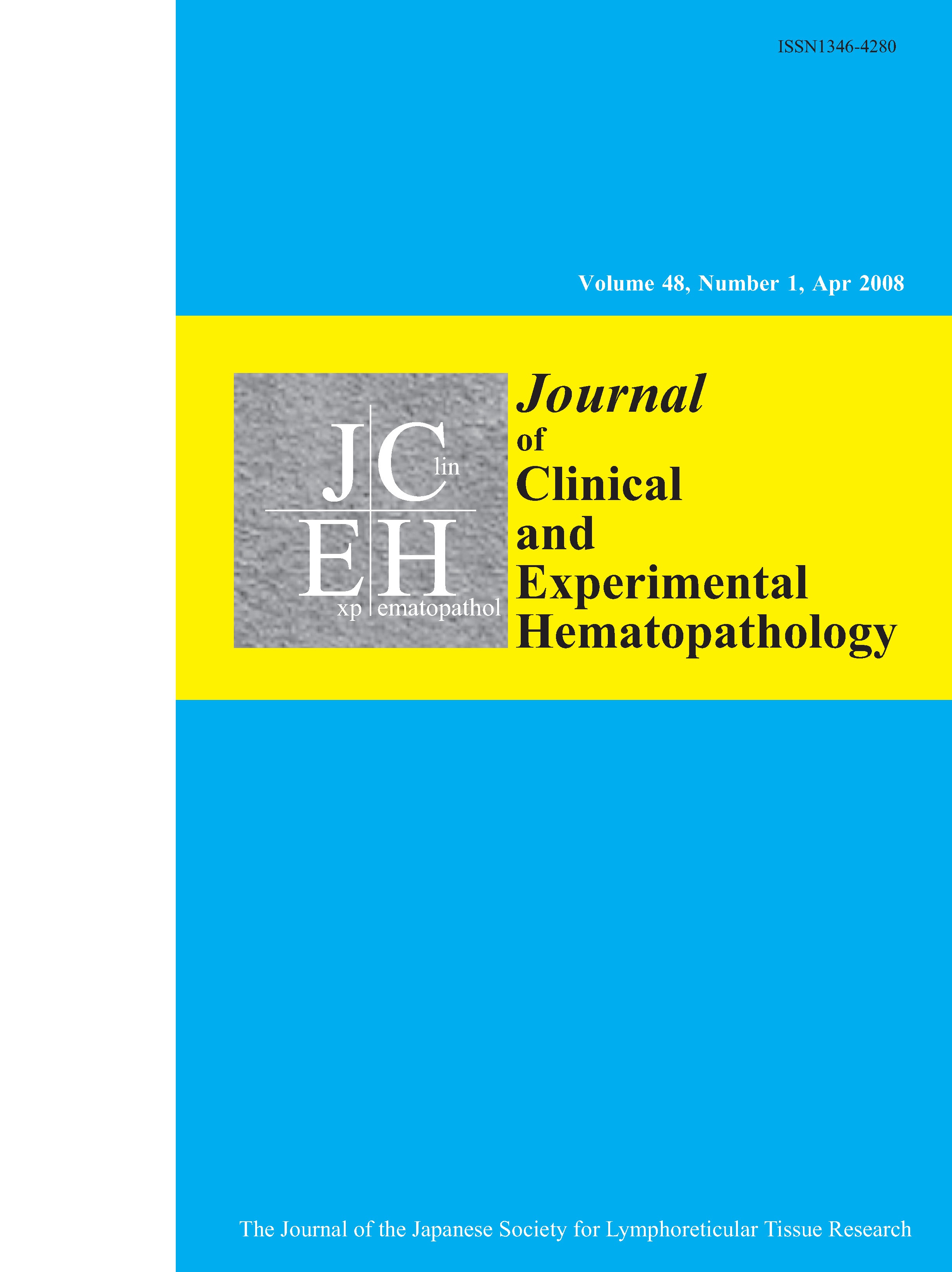Volume 53, Issue 1
Displaying 1-14 of 14 articles from this issue
- |<
- <
- 1
- >
- >|
Review Article
-
Article type: Review Article
2013 Volume 53 Issue 1 Pages 1-8
Published: 2013
Released on J-STAGE: June 21, 2013
Download PDF (501K)
Original Article
-
Article type: Original Article
2013 Volume 53 Issue 1 Pages 9-19
Published: 2013
Released on J-STAGE: June 21, 2013
Download PDF (842K)
Case Study
-
Article type: Case Study
2013 Volume 53 Issue 1 Pages 21-28
Published: 2013
Released on J-STAGE: June 21, 2013
Download PDF (785K) -
Article type: Case Study
2013 Volume 53 Issue 1 Pages 29-36
Published: 2013
Released on J-STAGE: June 21, 2013
Download PDF (497K) -
Article type: Case Study
2013 Volume 53 Issue 1 Pages 37-47
Published: 2013
Released on J-STAGE: June 21, 2013
Download PDF (1070K) -
Article type: Case Study
2013 Volume 53 Issue 1 Pages 49-52
Published: 2013
Released on J-STAGE: June 21, 2013
Download PDF (382K) -
Article type: Case Study
2013 Volume 53 Issue 1 Pages 53-56
Published: 2013
Released on J-STAGE: June 21, 2013
Download PDF (223K)
Highlights: Castleman-Kojima Disease (TAFRO Syndrome)
Meeting Report
-
Article type: Meeting Report
2013 Volume 53 Issue 1 Pages 57-61
Published: 2013
Released on J-STAGE: June 21, 2013
Download PDF (75K)
Original Article & Case Study
-
Article type: Case Study
2013 Volume 53 Issue 1 Pages 63-68
Published: 2013
Released on J-STAGE: June 21, 2013
Download PDF (477K) -
Article type: Original Article
2013 Volume 53 Issue 1 Pages 69-77
Published: 2013
Released on J-STAGE: June 21, 2013
Download PDF (266K) -
Article type: Case Study
2013 Volume 53 Issue 1 Pages 79-85
Published: 2013
Released on J-STAGE: June 21, 2013
Download PDF (681K) -
Article type: Case Study
2013 Volume 53 Issue 1 Pages 87-93
Published: 2013
Released on J-STAGE: June 21, 2013
Download PDF (333K) -
Article type: Case Study
2013 Volume 53 Issue 1 Pages 95-99
Published: 2013
Released on J-STAGE: June 21, 2013
Download PDF (645K)
Letters to the Editor
-
Article type: Letters to the Editor
2013 Volume 53 Issue 1 Pages 101-105
Published: 2013
Released on J-STAGE: June 21, 2013
Download PDF (341K)
- |<
- <
- 1
- >
- >|
